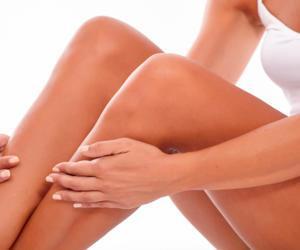Cradle cap, also called infantile seborrheic dermatitis, is a skin condition that commonly affects your baby’s scalp. If your baby has Cradle crap, you can see crusty or oily scaly patches on his/her scalp. These flakes are common in newborns. Though not painful and non-itchy, it can cause thick white or yellow scales that aren't readily removable. The symptoms usually resolve without treatment in a matter of few months. You can use simple home-care measures like washing your baby's scalp daily with a mild shampoo. Remember not to scratch cradle cap. You may need to use a medicated shampoo, lotion or other medications if the symptoms are severe or last longer.
Cradle Cap
1 What is Cradle Cap?
2 Symptoms
Symptoms of cradle cap can be confused with that of other skin conditions such as infantile eczema. Remember that unlike other skin conditions, Cradle cap does not cause itching. Common signs of Cradle cap include:
- Non-itchy scales or crusty layers on the scalp or ears, eyelids, nose and groin
- White flakes or yellow scales on the skin
- Mild skin redness
When to see a doctor?
Visit your baby’s doctor if the signs do not improve with home-remedies or other body parts such as face or body are affected.
3 Causes
No exact cause is known for Cradle cap.
Your baby’s signs may develop due to exposure to hormones while the baby is in mother’s womb. These hormones can stimulate production of oil (sebum) in the oil glands and hair follicles. In some cases, it may be caused by a fungus called malassezia that inhabits sebaceous areas of the skin. Antifungal treatments, such as ketoconazole, are effective in treating Cradle cap, supporting fungal cause of Cradle cap.
Remember Cradle cap does not spread by touch and is not a result of poor hygiene.
4 Making a Diagnosis
There is no specific method for making a diagnosis of cradle cap.
See your baby’s doctor if home-remedies do not seem to improve your baby’s signs or your baby's cradle cap spreads to other parts.
How to prepare yourself for the visit?
Getting prepared for the visit can optimize the therapy and help make the visit more fruitful.
List out all the symptoms.
Write down your key medical information.
Write down the names of all your medications, vitamins or supplements.
Make a list of the questions to ask your doctor.
What your baby’s doctor wants to know?
Be prepared to answer the questions from your baby’s doctor. Some typical questions can be:
- How long have been observing these signs in your baby?
- What home-care measure have you tried?
- How often do you wash your baby's hair? Do you use any specific shampoo while washing?
5 Treatment
The signs of Cradle cap usually resolve within months even without a treatment. While you are waiting for the signs to disappear, wash your baby’s hair daily with a mild shampoo followed by brushing gently with a soft brush. If it does not help, consult your baby’s doctor who may recommend:
- Anti-dandruff shampoo that contains 2% ketoconazole. Take care not to allow shampoo enter your baby's eyes.
- Steroid cream containing hydrocortisone for redness and inflammation.
CONSULT your baby’s doctor before using any non-prescription products such as cortisone or antifungal creams. Remember some of these products can cause toxic effects to your baby.
DON’T use anti-dandruff shampoos that contain salicylic acid.
6 Prevention
Daily shampooing (if possible) your baby's hair is the best preventive measure for cradle cap. Use a mild shampoo for the purpose.
7 Lifestyle and Coping
There are different ways to adapt your baby's lifestyle in coping with cradle cap.
Here are some tips to help manage your baby’s cradle cap:
- Never scratch the flakes. Rather, rub your baby’s scalp gently. This helps to loosen the flakes.
- Use a mild shampoo to wash your baby’s hair every day.
- Before rinsing, brush your baby’s scalp with a soft brush.
- For resistant flakes or scales, you may also use petroleum jelly or mineral oil to rub your baby's scalp. Leave the jelly or oil on the scalp for a few minutes, or hours.
- Then brush gently and wash with a mild shampoo.
- Don’t leave the oil in your baby's hair as it can worsen the signs.
- Once all the scales are removed, shampoo your baby's hair every few days to prevent accumulation of scales.








